You may recall back in 2017 when Indy slipped over in the house causing his hip to dislocate? The vets called it “Caudoventral Luxation of Coxofemoral Joint”. Read more: My Dog Dislocated His Hip!
Well the moment I had been dreading and trying in vain to avoid and coincidentally almost a year later to the day Indy’s hip spontaneously dislocated again! This time there was no accident, he didn’t slip over on the floors. He was trotting through the house when suddenly started yelping in pain. I took one look and could already see his stance that his hip had dislocated again.
We drove to the new Animal Referral Hospital located just 5 minutes drive away and Indy was immediately taken to a back room for assessment. The vet on duty confirmed what we were dreading; Indy had again dislocated his hip. They were trying to put his hip back in however each time it would luxate again, almost immediately! After dozens of attempts I was becoming exceedingly anxious that all this manipulation was causing further tear and damage. I asked the emergency vet to stop and call the specialist; Dr Lance Wilson (who I already knew was a great surgeon, he had operated on my cat Morticha’s leg many years ago) to see if he could come in after hours to look at Indy. I did not care what it would cost.
They were able to contact Dr Lance who checked the x-rays and advised that the type of dislocated Indy had would not cause any further damage to his ligaments or further tears due to the placement of the joint. Since Indy was pretty stressed out by this point, staff were directed to increase Indy’s medication so that he was pain free and comfortable and allow him to rest until the morning for further assessment.
Early the next morning Dr Lance called to explain that he had taken a look at Indy and no matter how many times he tried Indy’s hip refused to stay in place. Putting hobbles on this time was not going to work. My little boy needed surgery. The surgery involved would be done to “Stabilize Coxofemoral Luxation” using the toggle pin method. The toggle pin is supposed to stabilise the hip joint and prevent re-luxation. It has a 98% success rate.
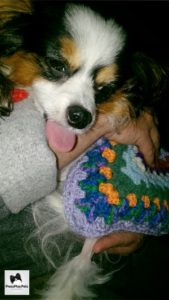
A Cuddle In Hospital After Surgery
After completing Indy’s surgery Dr Lance called to advise that everything went well and as planned. Indy did have a lot of internal bruising around the joint and during surgery the reason for Indy’s second luxation was revealed. It seems at the time of the original injury and when his hip was put back in place a very small tear occurred, likely when the hip popped out. Over the last 12 months that tear had increased and slide between the hip and joint. I was told to imagine it like a curtain. Something an x-ray does not show and makes it impossible for the hip to remain in place. Thinking back I recall Indy would sometimes do a little “yip”, which also appeared to happen for no particular reason. It is now presumed those little “yips” were probably from the tear increasing over this time.
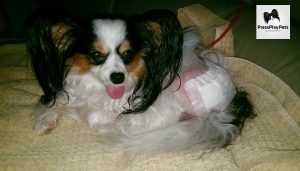
1st Day Home Post Hip Surgery
We went to visit Indy that afternoon; he was very drowsy and just wanted to be cuddled. Indy would be cleared to go home in a day or so. I couldn’t wait to pick him up, but I was also feeling anxious about his recovery.
Indy’s Treatment Plan:
– Revisit weekly for assessment of the hobbles
– Revisit in 10-14 days for wound reassessment
– Gabapentin 100g morning and night for pain relief
– Amoxyclav 50mg morning and night; a broad spectrum antibiotic
– Strict crate rest for the next 6 to 8 weeks
– Restricted and supervised short leashed toilet walks several times a day
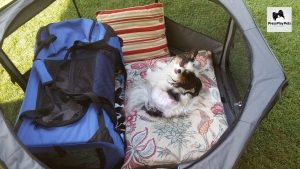
Indy Enjoying An Afternoon Outside In His Playpen!
The first check a week later went really well and they were all pleased with his progress. The only complication was that Indy had a reaction to bandage adhesive that covered his wound. It was very red, weepy and sore. After a few days of using Dr Zoo Irritable Skin Cream his skin settled down.
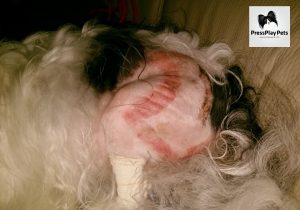
Red and Sore!
After a couple of weeks we were able to start taking Indy for rides in his old pram and we had even booked a long weekend away to Buderim. Pram, crate and play pen packed we headed up to the Sunshine Coast! That story is for another post.
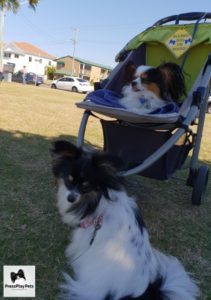
A Pram Ride At Sandgate!
The day finally arrived for the hobbles to be removed. It was an anxious moment but went off without a hitch!
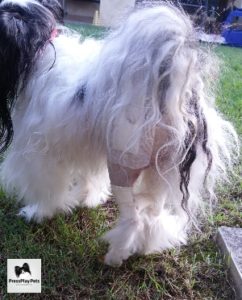
Indy’s Hobbles
At the time of writing this post it has been 5 months post surgery and Indy is still recovering. I was told it can take up to 8 months or even longer. He doesn’t understand that he is not fully better yet and still needs careful monitoring and management of his activities!
Indy is still currently in his crate and play pen when unsupervised and on leash in the backyard and in his pram on walks, although now allowed short walks one street at a time and slowly increasing the number of streets as he builds back his muscle strength. It is just a matter of time before he will be able to complete a full daily 30 minute walk.
Fingers crossed Indy is one of the 98% success rate stories!
Author Bio: Nikki is pack leader at Pressplay Pets, a blog for the modern age pet parent interested in health & care, news, reviews & personal accounts of unconditional love & at times heartfelt pain of pet parenting. She is also proud mum to cute and cheeky Papillons ‘Amber’ and ‘Indy’ and one crazy Rainbow Lorikeet named ‘Ralph’!
Follow Pressplay Pets blog:
Follow Instagram and Facebook.
Pressplay Pets a blog for the modern age pet parent interested in health & care, news, reviews & personal accounts of unconditional love & at times heartfelt pain of pet parenting!
Follow Us!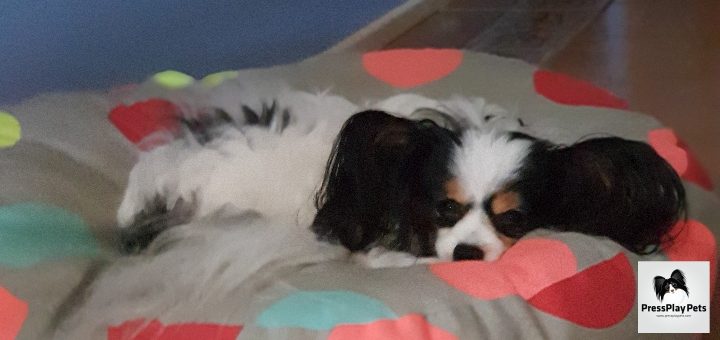
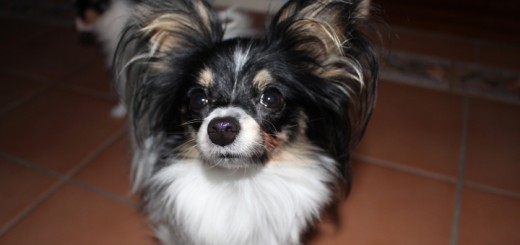
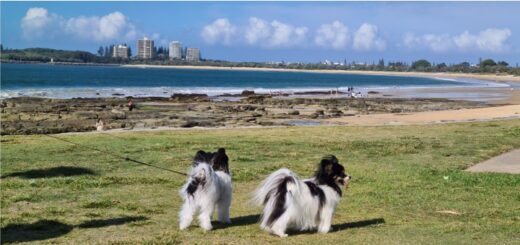
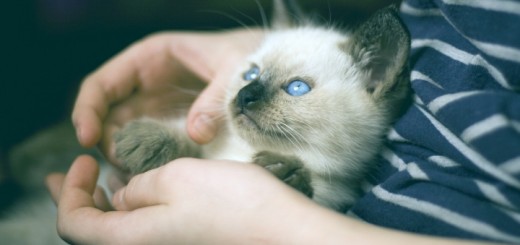

Hi My whippet pup has just had this procedure. I just wondered how Indy is with his recovery and is he ok now?
Indy is doing really well! Its like nothing had ever happened and has full function of his leg. I have started him on a natural product for the likely arthritis. I do hope your pup recovers well.